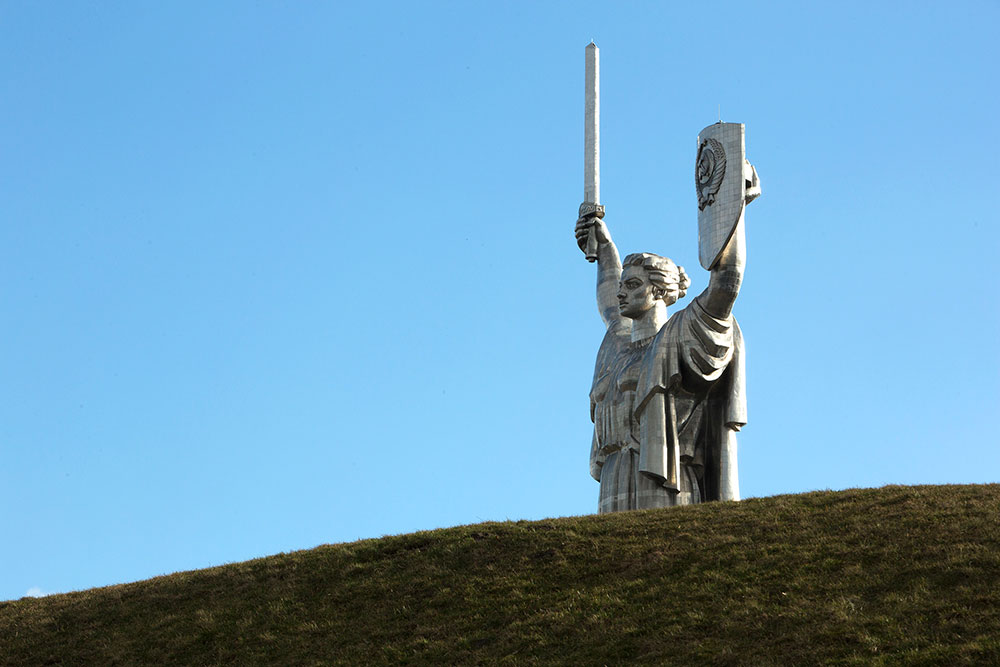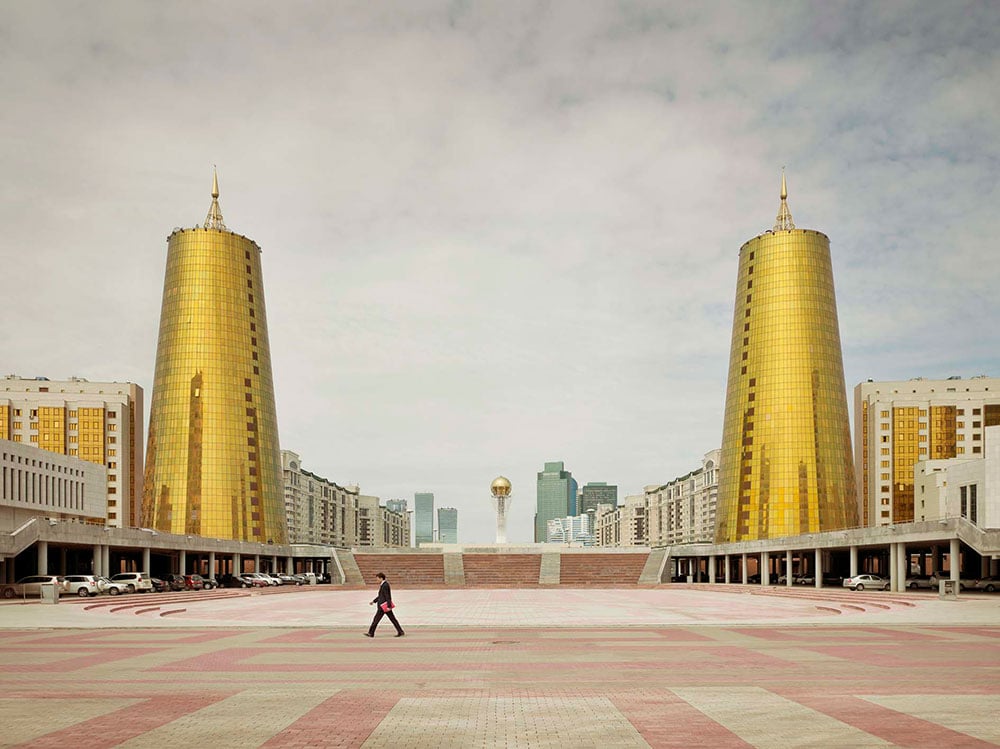Empire state of mind: how do you update a vast Stalinist exhibition space for the present day?
VDNKh, a sprawling park and exhibition site in the north of Moscow, has been a bellwether of Russia’s history since its opening in 1939. Conceived initially as a showcase of Soviet agriculture, it became the Exhibition of the Achievements of National Economy under Khrushchev, at once a display of technological innovation, a trade show, and an amusement park. It went through a rough patch after the collapse of the Soviet Union, when it was privatised and many of its grand pavilions were given over to petty trade overseen by shady mafia groups. In 2013, the Moscow City government obtained custody of it, promptly embarking on an energetic regeneration programme that has raised questions about the nation’s Stalinist architectural heritage.
The current management team aspires to turn VDNKh into one of the most iconic tourist destinations in the world
Extending over 235 hectares — almost equivalent to the entire City of London — VDNKh contains 49 listed objects and has become one of the focal points of battles over architectural preservation. Much of its architecture is designed in the grand post-war Stalinist style, but it also features iconic modernist buildings of the 1960s-70s. In addition, it comprises an amusement park, vast trade exhibition spaces, a farm, riding stables, a panoramic cinema, a green theatre, restaurants, a model Soviet village, and a system of fountains and ponds. It is surrounded by the landscape parks of the Botanical Garden and the country estate of Ostankino. Many of its pavilions are currently closed and some are in disrepair, but fundamental restoration is to come and the park is beginning to live up to its potential as a prime exhibition space. Its potential for further development is immense. The current management team aspires to turn VDNKh into one of the most iconic tourist destinations in the world, no less, banking on its ability to encapsulate Russian history in concentrated form.
But the challenges are daunting. One complex issue is the role of the state, in institutional and symbolic terms. The park is saturated with “statist” rhetoric, expressed in the pompous Stalinist idioms of revolutionary banners and wall paintings — omnipresent, often gloriously executed claptrap of socialist propaganda. In its Soviet incarnation, the Exhibition was meant as a celebration of the achievements of the state, and this ideology continues to weigh heavily on it. Anna Kovalevskaya, the Director of the Department of Territorial Development, told me that the current management team envisioned the park as a “demonstration of the individual and collective achievements of human beings” rather than a display of state might. In their view, its many pavilions represent a magnificent shell, within which one can inject “new content”. Hence they aspire to house an eclectic range of exhibits, aimed at different segments of the public and curated in collaboration with various institutions. Grandeur, that is, for the sake of re-branding. Yet crucially, the “meaning” of the VDNKh brand remains undefined.
The administration of the park and the Moscow City Government have so far displayed a marked tendency to restore the Exhibition to its condition in 1954, favouring Stalinism over Modernism. In 2014, the panels of two modernist facades were hastily taken down, in defiance of the law. In one case, stripped of its cladding, the Volga Region pavilion revealed a badly disfigured underlying facade. A third pavilion with a similar facade was spared an analogous destiny only because it is leased to Kazakhstan. Meanwhile two more modernist pavilions in the vicinity are slated for demolition, while the grounds and flowerbeds are to be redesigned this summer in the original Stalinist layout, which entails the cutting down of numerous mature trees. And a new restaurant serves the typical cuisine of the former Soviet republics in an appropriately Stalinist retro-chic setting.
It is impossible to carry through this hankering after the Exhibition’s 1954 appearance consistently, as it would involve the destruction of too many pavilions. Rhetorically, Kovalevskaya’s emphasis in my interview was consistently on heritage preservation, yet a marked predilection for 1954 as the optimal date is unmistakable. Undoubtedly, Stalinist architecture does not feature here as an embodiment of Stalin’s politics. Instead, it is aestheticised, stripped of its political and social context, and presented only as a badge of grandeur.
Stalinist architecture does not feature here as an embodiment of Stalin’s politics. Instead, it is aestheticised, stripped of its political and social context, and presented only as a badge of grandeur
But what does this pursuit of pompous aesthetics entail? Kovalevskaya breezily dismissed any link between culture and politics. When interviewed by Gazeta.ru, Eduard Boiakov, a prominent theatre director and producer who curates the newly renamed Kultprosvet (formerly Culture and before that Uzbekistan) pavilion on behalf of Russia’s Ministry of Culture, stated that “VDNKh is a vertical, it is the image of heaven on earth.” The Uzbekistan pavilion is so remarkable, according to him, that “as soon as you enter, you feel like a barbarian”. Previous users of the pavilion had closed it off into separate boxes, which, he states “comes from postmodernism, from the liberal idea of fighting against any vertical”. Instead, all that is needed, “is to study this space, to relate to it with respect and love…and not to fear being called ‘Stalinist’.” Is this heady stew of culture, religion, and politics, which echoes Putin’s long-standing rhetoric on the “vertical of power”, meant to celebrate the overpowering cultural capital of a resurgent Russia?
The genius loci of the Exhibition continues to haunt the premises in other ways, too. Initially, one of the main themes of the Exhibition’s rhetoric was the friendship of nations, embodied not only in the pavilions allocated to each Soviet Republic, but also in iconic features such as the glorious fountain called precisely “Friendship of Nations”. The cornerstone of this marriage between nations was the “everlasting fraternal union” between Russia and Ukraine; the decoration of the Ukrainian pavilion directly celebrates this union between the two Slavic countries. VDNKh, in other words, has been overtaken by history and from a contemporary perspective, much of its rhetoric ironically highlights the collapse of the communist dream, including and especially that of creating a world beyond nationalism.
VDNKh has been overtaken by history and, from a contemporary perspective, much of its rhetoric ironically highlights the collapse of the communist dream
Ilya Oskolkov-Tsentsiper, whose company was involved in creating a development masterplan for VDNKh in 2014-15, took a different stance with regard to the Stalinist architectural legacy. In an interview, he suggested to me that the grand Stalinist “layer” of the Exhibition should become an opportunity for public debate about Stalinism, for contextualisation, commentary, and democratic reckoning. It could not be hidden, as it is part of Russia’s identity, but nor should it be aestheticised, which would be “an immoral undertaking”. The Exhibition is de facto a “museum of the Stalin period”, but its various other strata should similarly be showcased, from the time it was an aristocratic playground for the Sheremetev counts to the Stalinist architecture of the 1930s and to the utopian spirit of the 1960s. Indeed, he called the architecture of the early 1950s the “heavy, turbid ravings of a tired empire, a world where Satan rules”, a period that cried out for open debate.
The early signs of VDNKh’s ideological repositioning are not encouraging. Pavilion 57 was rebuilt at great speed to accommodate a historical theme park on the rise and consolidation of the Russian state. The intention is to span the whole of Russia’s history. It consists of colourful multi-media displays that tell the story of the Russian state through its rulers. Its mainstay is not artefacts, but a collection of quotations by prominent Russian historians, philosophers, politicians, and religious figures augmented, for good form, by a few quotations from Russia’s “national” poet, Alexander Pushkin. Their general tenor is to celebrate the consolidation and unification of the Russian state under the savvy rule of its princes and tsars and under the spiritual (and political) guidance of the Orthodox Church. In an interview, Varvara Gogulia, the Deputy Director of the Museum and Exhibition Department strenuously denied that this exhibition in any way encapsulates the curatorial aims of the current management team. It was accommodated there because it already existed and because it would have been a shame to shelve it away. Tsentsiper, despite his profound distaste for this installation, similarly called for forbearance, claiming that “in no way does this exhibit reflect the views of Moscow City government, who are fairly non-ideological people”.
Even Tsentsiper maintains, however, that everything that happens in VDNKh should be “great”. All elements of the customer experience, “from the entrance ticket, to the sausages, not to speak of the architecture should contribute to this feeling of something marvelous, something incredible”. All stakeholders agree that VDNKh is about sublimity, although so far it seems to be an intransitive sublimity, a sublimity that celebrates only itself, rather than serving a political or social project, as it had initially. And if VDNKh somehow always mirrors the state of the nation, as everybody maintains, then one would have to conclude that it reflects Russia’s resurgent infatuation with its own power, but a power profoundly unsure of its identity, and therefore unable to articulate what it stands for, apart from some hackneyed truisms eclectically cobbled together. Perhaps the future development of VDNKh will tell us more.
Text: Andreas Schönle
Top image: Mark Boyarsky

